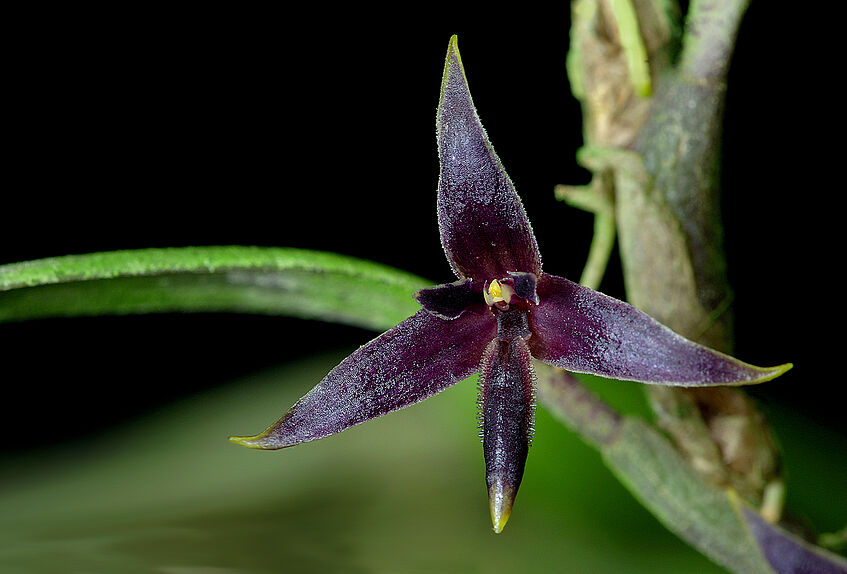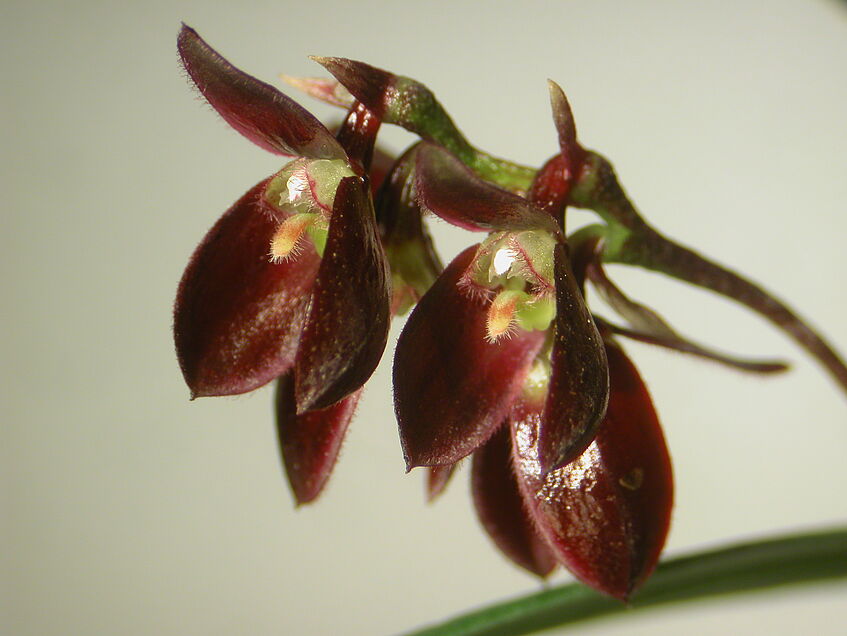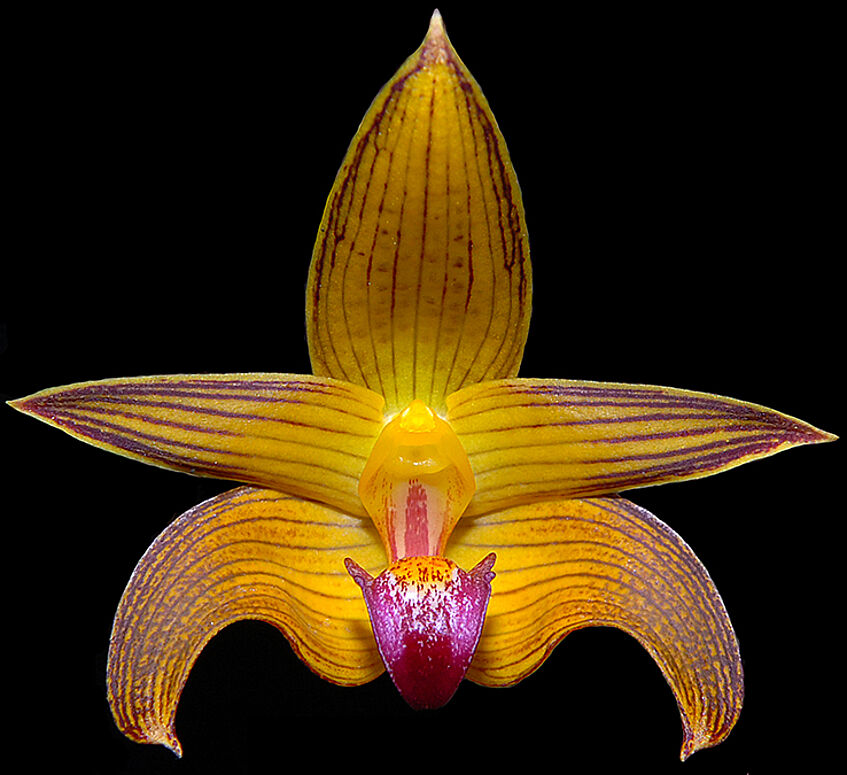Phylogenetic and geographic analyses of the orchid genus Bulbophyllum in Madagascar and the Mascarene Islands

Bulbophyllum © BGUW_R. Hromniak

Bulbophyllum pleurothallopsis © BGUW

Bulbophyllum lobbii © BGUW_R. Hromniak
Of the 210 described Madagascan species of the orchid genus Bulbophyllum, 98 % live exclusively on the island. The intensive local speciation here makes this genus an ideal model system to study evolutionary processes. Nonetheless, we still know very little about many of these Bulbophyllum species; at the same time, they are highly endangered due to habitat loss or illegal collection. This project is therefore pursuing several goals: Beyond studying the species diversity, the phylogeny and the biogeographic distribution of Bulbophyllum species on Madagascar, the results are designed to be directly applicable for nature conservation and species protection efforts.
This scientific endeavor involves intensive fieldwork (4 excursions to Madagascar), meticulous analysis of the earlier collections, and international cooperation between researchers from the Universities of Vienna and Salzburg with, among others, the Botanical and Zoological Park Tsimbazaza in Madagascar, the Nationaal Herbarium Nederland, and the Royal Botanic Gardens in Kew. In addition, large collections of living plants have been established in Madagascar, Vienna and Salzburg. These have been used for molecular and morphological studies and serve as an excellent basis for follow-up projects.
This work has revealed the need for a major taxonomic revision of the genus Bulbophyllum in Madagascar; to date, two Bulbophyllum species and one section have been newly described. Further first descriptions and section revisions are upcoming. DNA analyses were used to construct a phylogenetic tree which shows that (with one exception) all Madagascan species have a common origin. Combining the phylogenetic data with distribution patterns (based on GIS data analyses) shows that the speciation patterns correlate with climatic, geological and ecological parameters. Accordingly, the original distribution range of Madagascar's Bulbophyllum species lay in the northwestern rainforests. The remaining island was colonized only about 8-7 million years ago after climatic changes enabled monsoon forests to develop in the island's interior. That proved to be a stepping stone for a gradual adaptation to the conditions in the more arid sites of the southeast drylands.
The research results are useful for nature conservation and species protection efforts on Madagascar. The new distribution data helped identify regions whose species richness makes them especially worthy of protection. A collection of living Bulbophyllum plants was established during the project using third-party funds from Austria. In particular, the collection in a shade hall on Madagascar forms the foundation for a conservation collection of Madagascan orchids and represents a significant contribution to the Convention on Biological Diversity (CBD).
